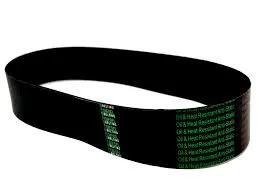- Arabic
- French
- Russian
- Spanish
- Portuguese
- Turkish
- Armenian
- English
- Albanian
- Amharic
- Azerbaijani
- Basque
- Belarusian
- Bengali
- Bosnian
- Bulgarian
- Catalan
- Cebuano
- Corsican
- Croatian
- Czech
- Danish
- Dutch
- Afrikaans
- Esperanto
- Estonian
- Finnish
- Frisian
- Galician
- Georgian
- German
- Greek
- Gujarati
- Haitian Creole
- hausa
- hawaiian
- Hebrew
- Hindi
- Miao
- Hungarian
- Icelandic
- igbo
- Indonesian
- irish
- Italian
- Japanese
- Javanese
- Kannada
- kazakh
- Khmer
- Rwandese
- Korean
- Kurdish
- Kyrgyz
- Lao
- Latin
- Latvian
- Lithuanian
- Luxembourgish
- Macedonian
- Malgashi
- Malay
- Malayalam
- Maltese
- Maori
- Marathi
- Mongolian
- Myanmar
- Nepali
- Norwegian
- Norwegian
- Occitan
- Pashto
- Persian
- Polish
- Punjabi
- Romanian
- Samoan
- Scottish Gaelic
- Serbian
- Sesotho
- Shona
- Sindhi
- Sinhala
- Slovak
- Slovenian
- Somali
- Sundanese
- Swahili
- Swedish
- Tagalog
- Tajik
- Tamil
- Tatar
- Telugu
- Thai
- Turkmen
- Ukrainian
- Urdu
- Uighur
- Uzbek
- Vietnamese
- Welsh
- Bantu
- Yiddish
- Yoruba
- Zulu
nov . 06, 2024 21:53 Back to list
v belt for motor
Understanding V-Belts for Motors An Essential Component for Efficiency
V-belts are crucial components used in various mechanical systems to transmit power from one rotating shaft to another. They play a vital role in the operation of electric motors, ensuring that the energy generated by the motor is effectively transferred to perform work. Understanding the significance of V-belts, their types, and maintenance practices can enhance the efficiency and longevity of motor-driven applications.
What is a V-Belt?
A V-belt is a type of flexible belt with a trapezoidal cross-section, designed to fit into the grooves of pulleys. The V shape allows the belt to wedge into the pulley grooves, increasing friction and ensuring a tight grip during operation. This design makes V-belts a preferred choice for various applications, including industrial machinery, automotive engines, and HVAC systems.
Types of V-Belts
V-belts come in several types, each suited for specific applications
1. Classical V-Belts These are the most common and come in various widths and lengths, making them versatile for many applications.
2. Narrow V-Belts These belts are narrower than classical V-belts but designed to carry the same amount of load. They are ideal for high-speed applications where space is limited.
3. Cogged V-Belts Featuring notches along their length, cogged belts provide flexibility, allowing for tighter bending around pulleys, which is especially useful in small spaces.
v belt for motor

4. High-Performance V-Belts Designed for demanding applications, these belts can withstand high temperatures and loads, making them suitable for heavy machinery.
Benefits of Using V-Belts
V-belts offer several advantages in motor applications
- Efficiency They reduce slippage and energy loss, ensuring that motors operate at their peak efficiency. - Durability V-belts are made from tough materials that resist wear and tear, contributing to longer service life. - Cost-Effective They are generally less expensive to replace compared to other power transmission options. - Easy Installation V-belts are relatively easy to install and replace, minimizing downtime in industrial settings.
Maintenance Tips
To ensure optimal performance, regular maintenance of V-belts is essential
- Inspect Regularly Check for signs of wear, such as fraying or cracking, and replace belts if necessary. - Check Tension Proper tension is crucial. A loose or overly tight belt can lead to premature failure. - Align Pulleys Misalignment can cause uneven wear, so regularly check and adjust pulley alignment.
In conclusion, V-belts are integral to the effective functioning of motors in various applications. By understanding their types, benefits, and maintenance needs, users can ensure their systems operate efficiently and reliably. With the right care and attention, V-belts can provide long-lasting performance, making them a valuable component in any motor-driven setup.
-
Korean Auto Parts Timing Belt 24312-37500 For Hyundai/Kia
NewsMar.07,2025
-
7PK2300 90916-T2024 RIBBED BELT POLY V BELT PK BELT
NewsMar.07,2025
-
Chinese Auto Belt Factory 310-2M-22 For BMW/Mercedes-Benz
NewsMar.07,2025
-
Chinese Auto Belt Factory 310-2M-22 For BMW/Mercedes-Benz
NewsMar.07,2025
-
90916-02660 PK Belt 6PK1680 For Toyota
NewsMar.07,2025
-
drive belt serpentine belt
NewsMar.07,2025

